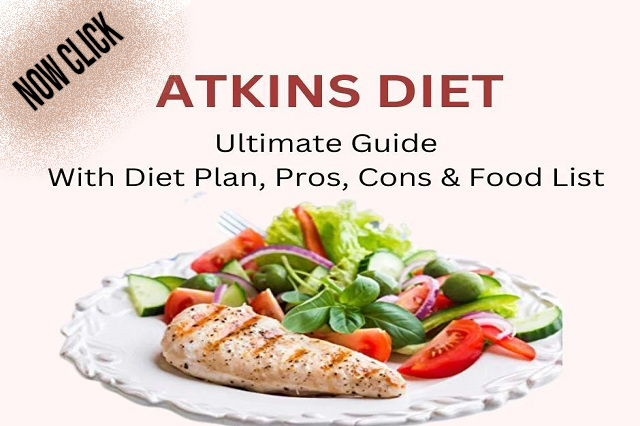What Exactly Is a Low-Carb Diet?
To start, remember that what constitutes low carb for one person may not for another. In Columbus, Ohio-based RD Kelly Schmidt asserts that the term “low-carb” has no established medical meaning.
Essentially, it entails consuming fewer carbs than normal. However, the expert notes that a low-carb diet normally contains between 50 and 100(g) of carbs per day. Very low-carbohydrate diets have fewer than 100g of carbs per day, whereas moderate-carbohydrate diets contain 200g or more.
Potential Advantages of a diet.
Low-carb eating is probably the topic you hear about the most, but Schmidt claims that for some people, the strategy may also help them achieve their health goals. According to research, women who are obese or who have metabolic issues “may do better hormonally on lower carbs,” says Schmidt, noting that additional benefits of the diet may include improved sleep, increased satiety, and enhanced mental clarity. up and to the right arrow.
A1C, or the two to three-month average of blood sugar levels, can benefit from reducing blood sugar and insulin levels, a low-carb dietitian. Another common objective for those with type 2 diabetes is weight loss, which may also help.
According to earlier studies, eating three meals with less than 30% of total carbohydrates each reduced insulin resistance by more than 30% when compared to eating three meals with more than 60% of total carbohydrates. In just one month, a low-carb diet can reduce insulin resistance, according to more research on the right-up arrow. The outcomes can also be seen. A very low-carb diet reduced visceral fat, a type of belly fat that hugs organs and is associated with disease, three times more than a low-fat diet, according to a small randomized clinical trial on older obese adults.
Additionally, the low-carb group lost 9.7 percent of their total body fat, compared to just 2 percent for the low-fat group. A meta-analysis also found that obese individuals who followed a low-carb diet over a year lost fat (but not body weight), with a very low-carb diet providing the most significant benefits.
Low-carb dieting has its drawbacks.
However, there is no consensus that a low-carb diet is superior to other diets or is healthier long-term. When it comes to weight loss, a low-carb diet does no better than other higher-carb diets, and it also doesn’t lead to better glycemic control, according to a review that looked at the diet among people with diabetes. Right up arrow over a year, those following a low-carb diet lost weight more quickly than those following a low-fat diet, but after a year, weight loss and A1C levels (an average of blood glucose over roughly three months) were strikingly similar. the right up arrow.
Low-carbohydrate diets’ health risks.
Low-carb diets may also pose a risk to some groups. If you are expecting or breastfeeding, you should not follow a low-carb diet (unless you have gestational diabetes, in which case you should see your healthcare providers).
According to Spritzler, “Many pregnant women find that the thought of eating protein and fat makes them sick.” In the first trimester, this can be particularly frequent. Of course, they need more carbohydrates. Always pay attention to your body, she advises.
Think about your lifestyle in addition to pregnancy. A low-carb diet might not adequately fuel someone who engages in strenuous CrossFit-style exercises.
According to Schmidt.
Call the doctor if you have any health issues. For instance, if you have kidney disease, you should also discuss the right amount of protein intake with your doctor. You can still follow a low-carb diet if you have heart disease, but you should choose monounsaturated fats over saturated fats (butter and red meat) instead. No matter if you have heart disease or not, this is true for everyone.
Even while some research indicates a low-carb diet including more saturated fat than current recommendations did not increase “bad” LDL cholesterol (a risk factor for heart disease), you should still be vigilant about the quality of the items in your low-carb diet, right up arrow Everyone’s cholesterol levels respond differently on a low-carb diet, so if yours are going up, switch to unsaturated sources of fats. “In particular, this diet is doable for most people.” The expert advises speaking with a doctor who is knowledgeable about low-carb diets if you have a chronic illness so they can keep an eye on you. Finally, according to experts in nutrition and mental health, a low-carb diet might be harmful if you have a history of eating disorders.
Types of Low-Carb Diets.
Keto diet.
The most restrictive diet recommends eating more fat and fewer than 50 g of carbs per day. You’ll eat a respectable amount of protein. It’s a well-liked diet strategy for weight loss.
Regular Low Carb.
Because it is less strict than a keto diet meal plan but still effective, this approach, which allows for 50 to 100 g of carbs per day, is where many people begin.
Atkins diet.
The Atkins diet consists of four phases that begin with very low carbohydrate consumption and gradually increase your intake of foods high in carbohydrates. It benefits those who prefer a more organized plan.
The Dukan Diet.
The technique has 4 stages: 2 for weight loss and 2 for maintenance. For instance, the first phase of the Dukan diet focuses on high-protein foods, the second phase adds vegetables back in, the third phase permits two “celebration” meals each week, and the fourth phase is about maintaining your weight. It also appeals to those who require a planned approach because you can follow the diet described in the book.
A Paleo diet.
Although the paleo diet can be followed this way, just because grains are avoided doesn’t mean it has a low carbohydrate content. This is especially true if you consume fruit and root vegetables like sweet potatoes.
A List of Foods Suitable for a Low-Carb Diet.
Although the food lists for low-carb diets vary depending on the plan, here’s a look at what you’d eat and avoid on a standard low-carb diet.
Foods to Consume.
Non-starchy vegetables include tomatoes (7 g carbs per cup), broccoli (6 g carbs per cup), cabbage (5 g carbs per cup), Brussels sprouts (8 g carbs per cup), and zucchini (4 g carbs per cup).
- Meat, including lamb, beef, pork, and chicken (0 g carbs per 3 ounces [oz]).
- Fish and seafood, such as shrimp, are low in carbohydrates (0 g per 3 oz).
- Eggs (zero grams of carbohydrates per egg): right-up arrow.
- Cheese, such as cheddar (less than 1 g of carbohydrates per 1/2 oz), right up arrow.
- Olives (10 small olives, 2 g carbs) right up arrow.
- Oil (zero grams of carbohydrates per tablespoon [tbsp]), such as canola, olive, and coconut oil.
Foods to Avoid or Limit.
- Processed snacks such as cookies, chips, and crackers.
- Fruits with more carbohydrates, such as bananas and grapes.
Both lentils and beans.
Depending on your carbohydrate goal, starchy vegetables like potatoes and sweet potatoes may be acceptable in moderation but watch the portions.
Foods with a lot of sugar, including soda, ice cream, candy, and cake.
Summary: Should You Follow a Low-Carbohydrate Diet?
Although it’s still unclear whether a low-carb diet is better than other strategies for long-term weight loss and general health, low-carb eating may be a stepping stone to better health, mainly if you’re accustomed to the standard American diet, which is high in processed foods and low in vegetables.
To start (on a moderate-carb diet), Schmidt advises trying to consume less than 200 g of carbohydrates per day. You can then decrease your intake based on how you feel. You’ll consume fewer processed foods if you start monitoring the number of carbs in your diet, she advises. These whole foods are the cornerstone of good health.



